“A Song of Ice and Fire” author George R.R. Martin is known for making characters that aren’t wholly good or wholly evil, but seven seasons into “Game of Thrones,” one of the only things we know about the White Walkers is they want death, death and more death.
Would it kill a White Walker to just stop and ask the director, “What’s my motivation here?” and report back?
Though the White Walkers’ intentions have been shrouded in mystery since the start of the series, one of the clues to their overall motivation thus far has been their symbols left around Westeros like calling cards since the Season 1 premiere.
The symbols showed up again in the first episode of Season 8.

Beric Dondarrion (Richard Dormer), Tormund Giantsbane (Kristofer Hivju), Dolorous Edd (Ben Crompton) and various others stumble upon the symbol at Last Hearth, the seat of House Umber in the North. It’s a spiral made of limbs, with the young lord of House Umber, Ned Umber (Harry Grasby), pinned to the wall in the middle. (Poor kid just wanted wagons for his people to help join the fight and now he’s part of a White Walker art installation.)
“It’s a message from the Night King,” says Beric.
The boy then springs to life, scaring the living heck out of anyone not keen on horror movies.
“It was scary, wasn’t it?” Richard Dormer said to HuffPost after the premiere in New York City earlier this month. “It was exactly like it was on-screen. The sets they make are incredible.”
According to Dormer, the symbol on the wall was a surprise to him, too.
“Coming down the stairs, David Nutter, who directed it, wouldn’t let us see what’s on the wall … I was holding up the torch and was literally lighting that, going, ‘What are we looking at?’ And it’s only through the flames we started to see there were limbs and a pattern. We went, ‘Oh, my God.’ So he caught that [on film].”
“It was very eerie and very strange, especially seeing a little boy pinned up on the wall,” he added.
The pinned-up Umber boy seems to be a callback to the pilot, when a brother of the Night’s Watch came across a dead wildling fastened to a tree.
As mentioned, a symbol was left from that first White Walker encounter, too:
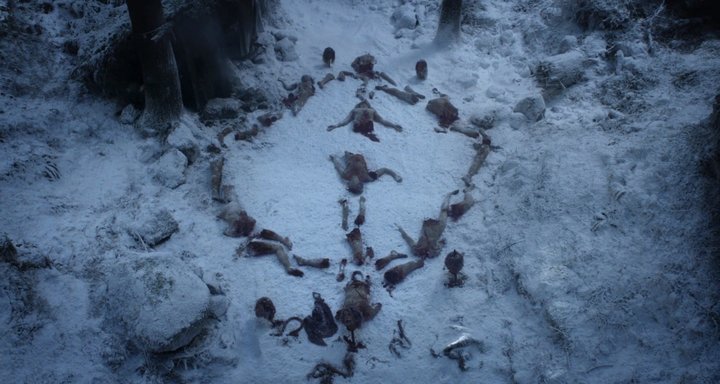
Following the Season 8 premiere, fans questioned the meaning of the symbols, which have appeared over and over again.
In Season 3, Mance Rayder (Ciarán Hinds) memorably says, “Always the artists,” while looking at a White Walker spiral left after the army of the dead attacked the Night’s Watch:
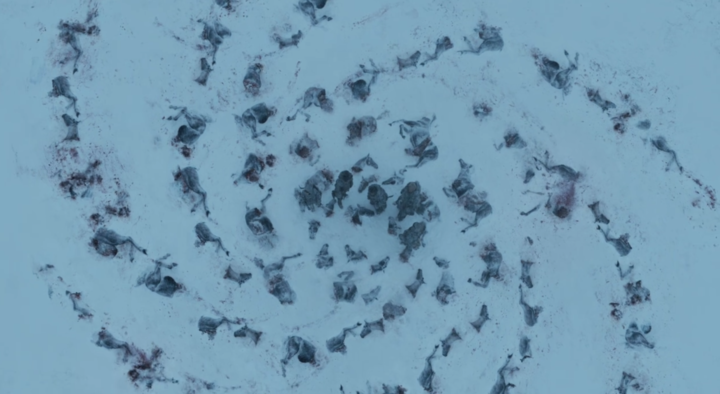
In Season 7, Jon Snow (Kit Harington) shows symbols found in the Dragonstone caves to Daenerys (Emilia Clarke):
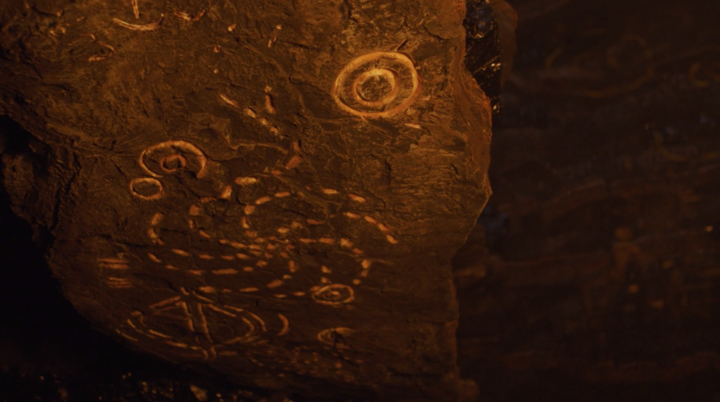
And in Season 6, the Children of the Forest seem to have a spiral setup when the White Walkers are being created:
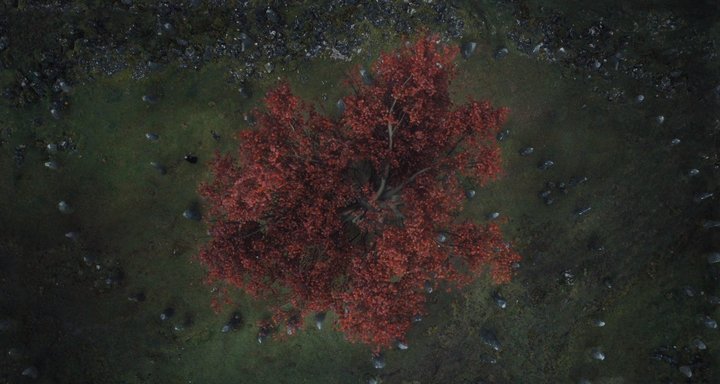
“I overheard somebody say, ‘Is it the symbol of the Lannisters? That spiral?’” Dormer told us, speculating himself that it’s a universal symbol for life or something eternal.
“The spiral means something. It’s the thing that they leave everywhere, so you can read into that in the universe. It’s the universal building structure of life, like, you know, spiral galaxy, swirling coffee, the way water goes,” he said.
Dormer thinks it may always be a mystery, but he’s OK with that.
“I think [it’s] George R.R. Martin being very clever on a subconscious level, dipping deep into the human psyche, and we’re probably not even going to know why they do that. I think that’s genius. It makes us think really deeply about images and things, and it just opens up the whole world.”
When asked if the symbol could represent time, or a time loop, which is a theory we brought up to Isaac Hempstead Wright a couple of years ago, Dormer said, “That’s what I’m talking about. It’s like a spiral, a continuum, a thing that is eternal. That is all around us.”
David Benioff, one of the showrunners, talked about the images before in a behind-the-scenes video from Season 7, saying:
The White Walkers didn’t come up with those images; they derived them from their creators, the Children of the Forest. These are patterns that have mystical significance for the Children of the Forest, we’re not sure exactly what they signify, but spiral patterns are important in a lot of different cultures in our world, and it makes sense that they would be in this world as well.
Given the cryptic nature of the spirals and the real-world inspiration brought up by Benioff, HuffPost reached out to experts to get their perspectives.
Paleoanthropologist Genevieve von Petzinger, who’s studied some of the oldest cave art in the world and is also a fan of the show, joked that she already works “back in the time of the First Men.”
″[‘Game of Thrones’] has a lot of spirals and circular imagery or like pinwheeling almost, like the circular motifs, which is so interesting because we think of them as being really ancient, but in reality they’re almost nonexistent during the ice age. They actually start right towards the end of the ice age, which is interesting in its own right because it suggests something new is starting to happen,” she said.
She also sent some photos her husband, Dillon von Petzinger, took of similar-looking art found in the real world.
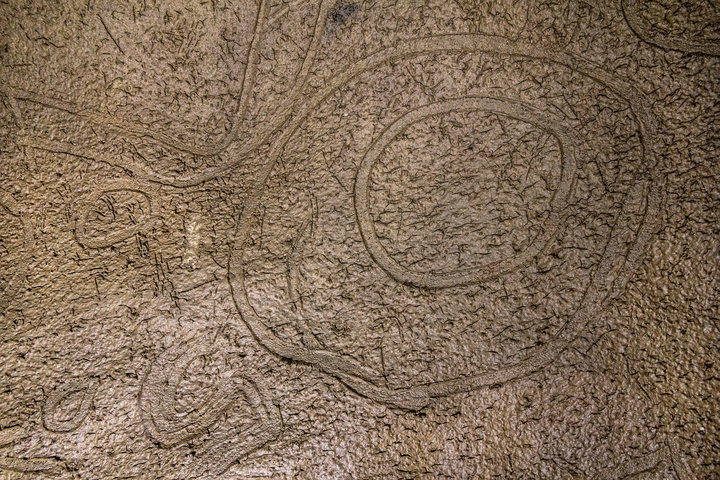
Interestingly, Genevieve von Petzinger is doing her own research on spirals now, which she reiterates are rare in her work but come up during the very late Ice Age.
“Spirals, usually what people have suggested, is that they could relate to some sort of spiritual practice, like shamanism or something like that […] it may be a real-world landscape feature as well. Again, there’s some interesting stuff in ‘Game of Thrones’ where they’ve made landscape features match with the symbolism, so I think the jury is out as to what it means.”
Though the real-world meaning of spirals is still debated, Genevieve von Petzinger agreed that time could be one of the meanings for the show.
“I think in later time periods, spirals can certainly be associated with time and repeating of things, right? Like, the endless spiral is a very powerful symbol,” she added. “New beginnings, continuations, sort of repeating time wheels, all that stuff. I think that’s where they’re going in the show if I had to guess.”
Miranda Aldhouse-Green, a British archaeologist and emeritus professor at Cardiff University, who’s behind books such as “Celtic Art: Symbols and Imagery,” doesn’t watch the show but had some insight on the symbols, telling HuffPost: “The circles with lines or crosses and the spirals are well-known as prehistoric European ritual symbols. They appear on stones in Neolithic (New Stone Age) passage graves, and seem to be symbols of light in the darkness of death and also may represent life after death.”
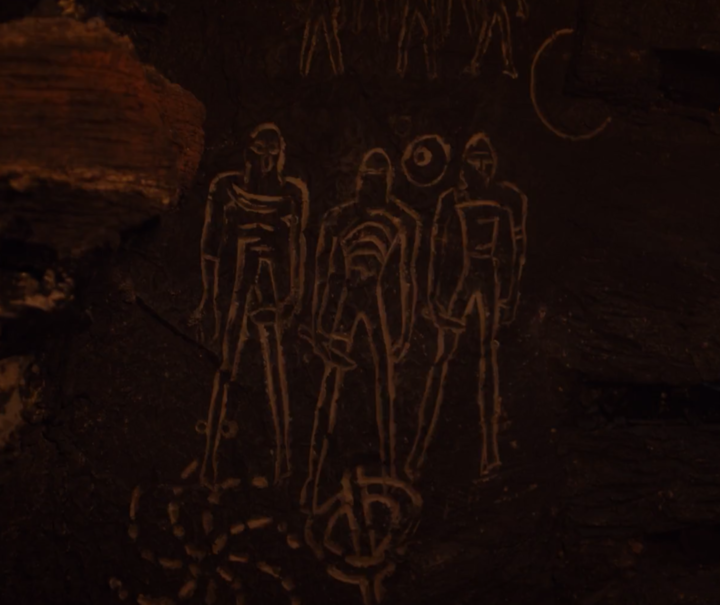
She added that the circles with a single line through the middle “might be a symbol of division, of breaking the circle of life and of time.” The spirals could represent the “passage of the sun (or moon) through the sky during day and night (so representing time), but spirals can also be associated with ritual dance, in particular the dance through the sacred labyrinth, the weaving of people in trance states through meandering, convoluted spaces.”
After hearing a description of the White Walkers, Aldhouse-Green also said the skeletal or X-ray figures could represent the “otherworld.”
“In some indigenous cultures, these X-ray figures represent shamans, people who have the power to move in soul-flight between the material world of people and the otherworld of the spirits. The leaving of the symbols by the White Walkers suggests to me that these beings are marking their presence as killers belonging to alternative dimensions. In a sense, the symbols are the White Walkers themselves.”
We can speculate on the symbols all we want, but Dormer suggests the ending of “Game of Thrones” is something no one will expect.
“I think everybody’s got an idea of what might happen, but I think everybody’s going to be totally surprised. People are going to talk about it for a long time after it’s finished.”



















![[Book Review] The Blade Itself (The First Law Trilogy) by Joe Abercrombie](https://bendthekneegot.com/wp-content/uploads/2018/01/1516047103_maxresdefault-218x150.jpg)
















